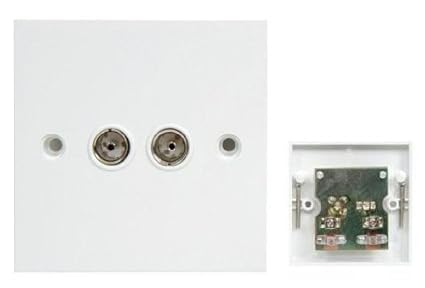- Joined
- 4 Mar 2020
- Messages
- 3
- Reaction score
- 0
- Country

Is earthing on a communal satellite dish a legal requirement?



Yeah. Very nice. But click the Thanks button.Thx Lucid


Not so sure with satellite, but with simple aerials the aerial is NOT earthed, the distribution amplifier may be earthed, but not the aerial, normally there is a filter or braid breakerCommunal systems must be earthed or bonded. If they are not a fault at one sub that put 240v on the cable would send that 240v to all the other subs.

I would not consider a "Communal satellite dish" as domestic, it may feed domestic, but would consider the dish to be commercial. There are two types of aerial sockets, those with capacitors to stop DC used for connection direct to aerial, and those without used to connect to a booster, the latter I find are hard to find, required with the old Sky magic eyes, and with mast head amplifiers were DC is sent up the coax.Domestic TV aerials do not have any filtering circuitry like that, at best they will have a balan. The coax is connected to the driven element which is often a folded dipole clamped at its midpoint (zero voltage) to the aerial boom which if earthed as recommended does NOT stop the aerial working.
Whether earthing it attracts lightning is another matter but earthing it will certainly prevent the aerial system from rising to unhealthy potentials with nearby lightning.

If you need to find a tradesperson to get your job done, please try our local search below, or if you are doing it yourself you can find suppliers local to you.
Select the supplier or trade you require, enter your location to begin your search.
Are you a trade or supplier? You can create your listing free at DIYnot Local
